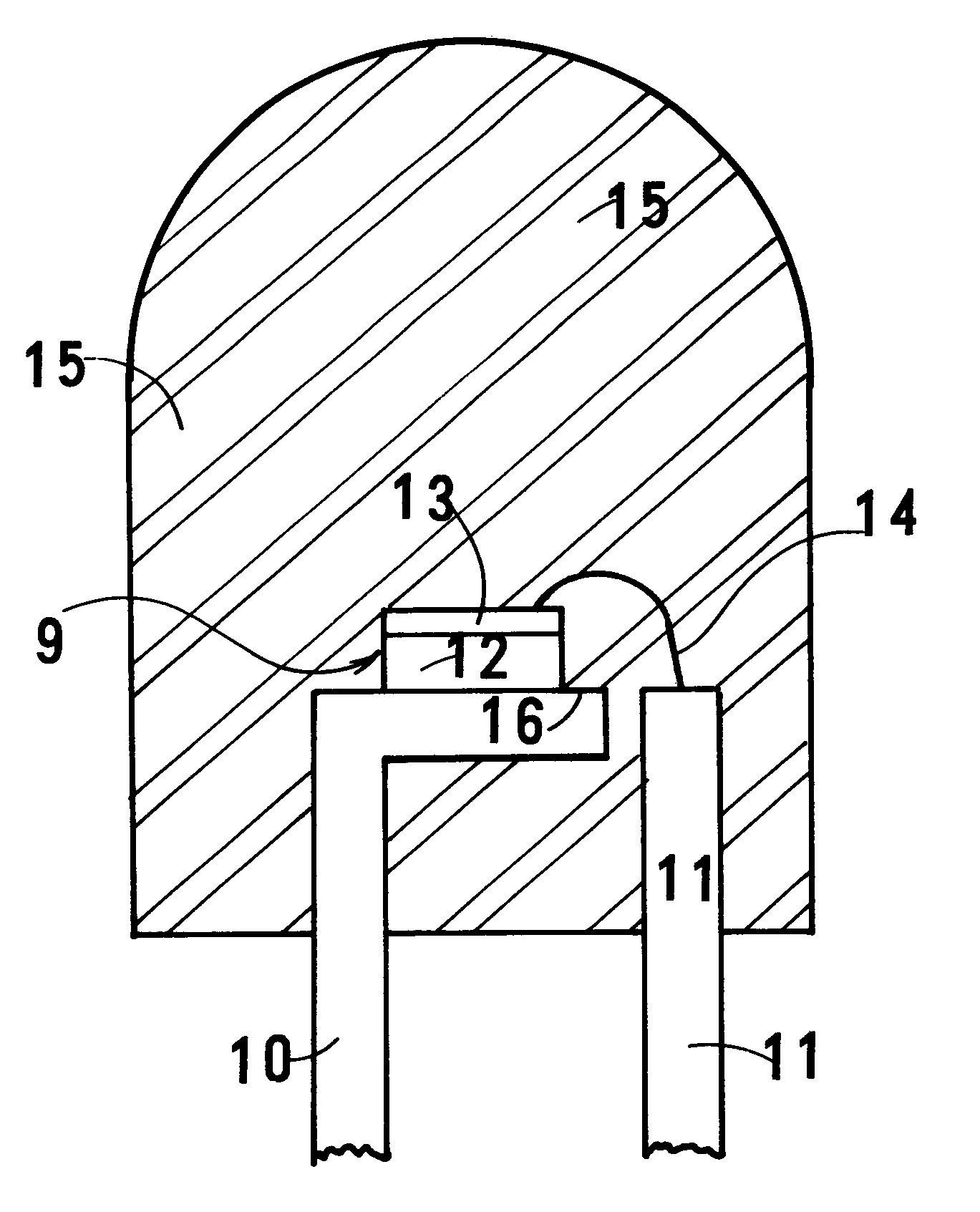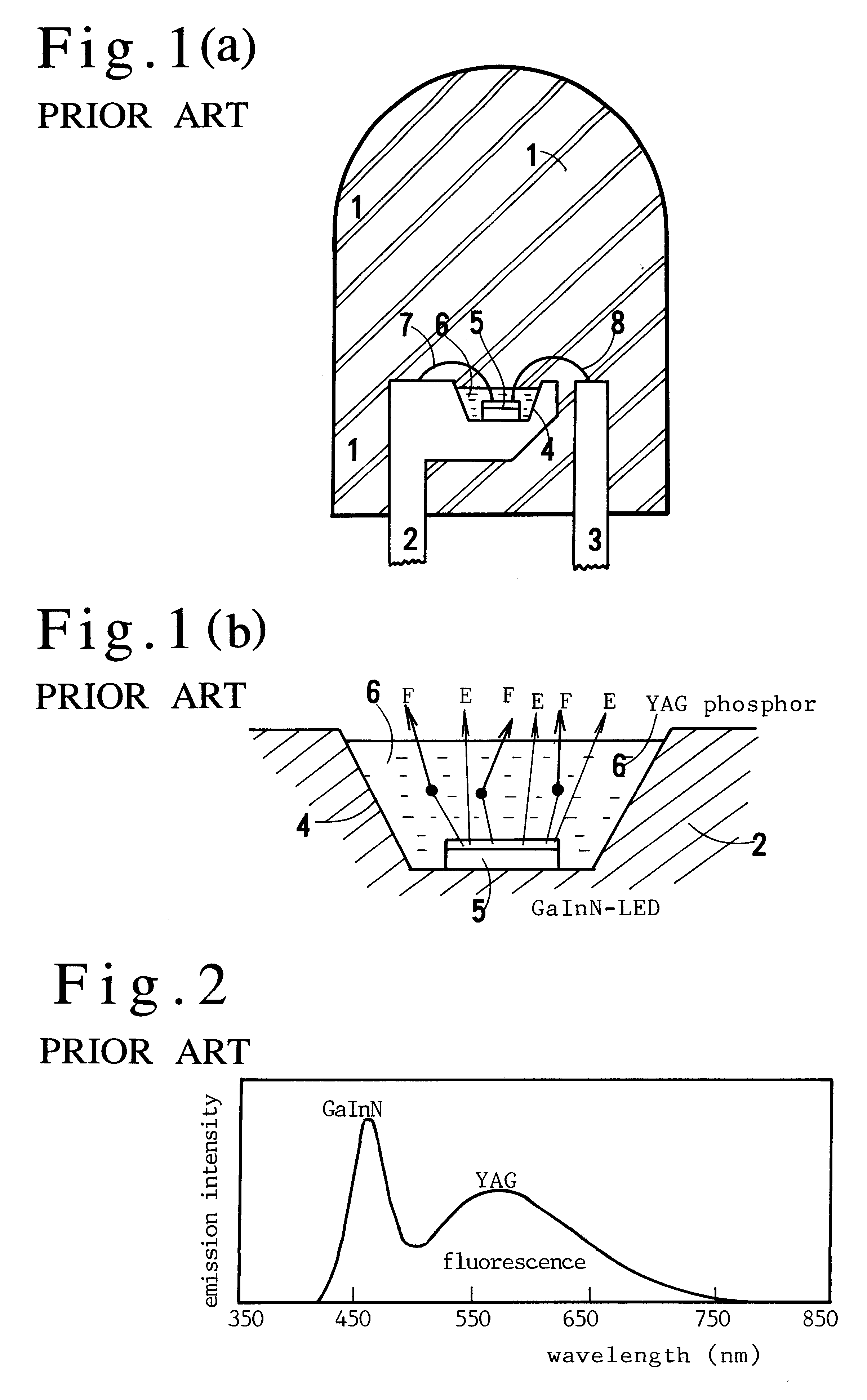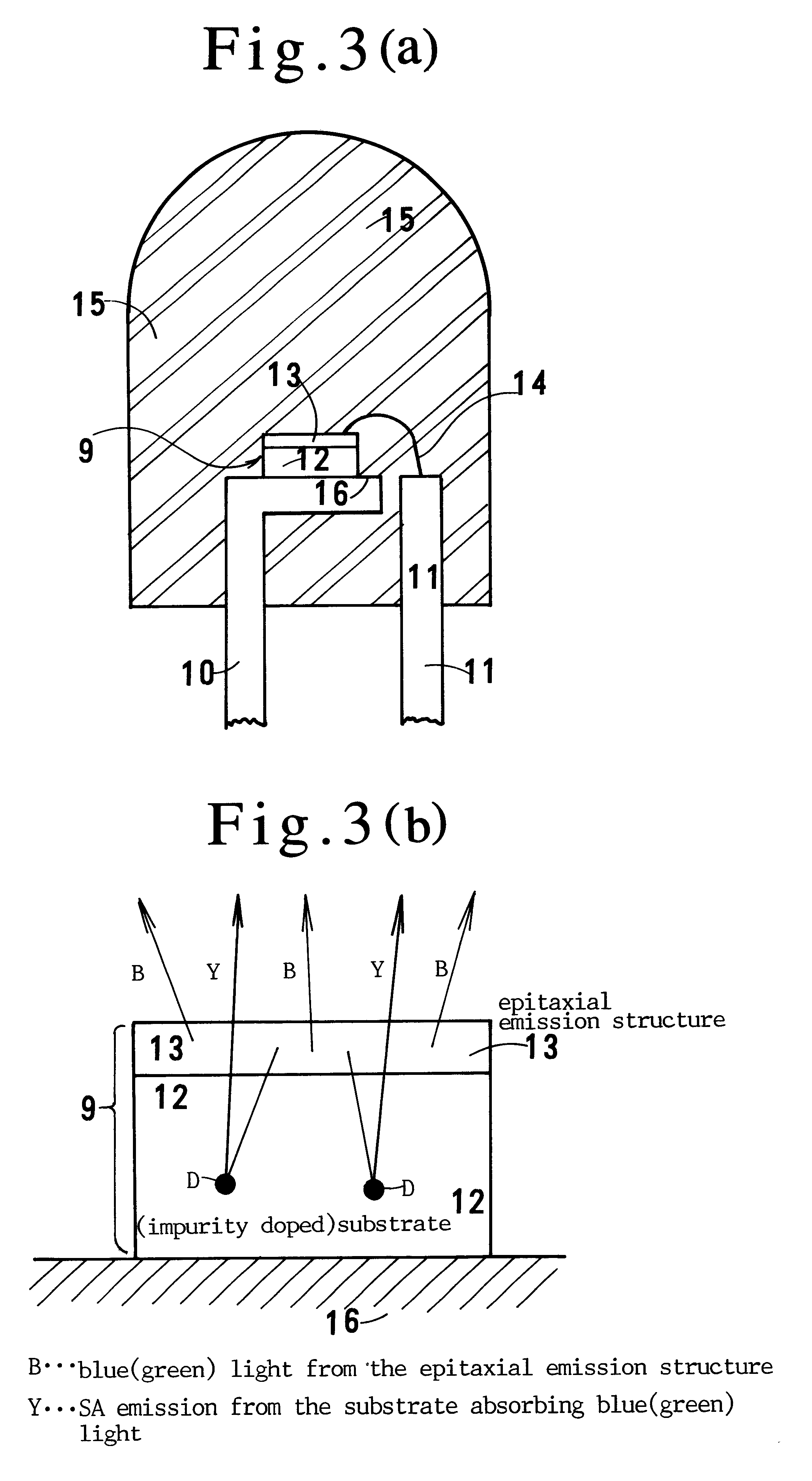Substrate-fluorescent LED
a technology of fluorescent led and substrate, which is applied in the direction of discharge tube/lamp details, discharge tube luminescnet screens, electric discharge lamps, etc., can solve the problems of short life of incandescent lamps, complicated led structure, and enhancing production costs
- Summary
- Abstract
- Description
- Claims
- Application Information
AI Technical Summary
Benefits of technology
Problems solved by technology
Method used
Image
Examples
embodiment 1 ((
[Embodiment 1 ((I+Cu)ZnSe substrate, 630 nm; ZnSe / ZnCdSe active layer, 480 nm; pink, redpurple)]
A ZnSe substrate 20 doped with iodine (I) and copper (Cu) is prepared. An epitaxial emission structure having a ZnSe / ZnCdSe multiquantum well active layer 23 is built upon the ZnSe substrate as shown in FIG. 5.
The band tailing phenomenon allows the I+Cu doped ZnSe substrate 20 to absorb the light of a wavelength shorter than 510 nm (wavelength A=510 nm) and to produce the fluorescence (SA-emission) having a broad peak at 630 nm (wavelength B=630 nm) by the fluorescence centers (SA-centers) I and Cu. The band tailing phenomenon plays an important role in the present invention. A pure semiconductor of a band gap Eg is inherently transparent to the light of a wavelength .lambda. longer than the band gap wavelength .lambda.g (=hc / Eg) but opaque to the light of a wavelength .lambda. shorter than .lambda.g. Doping some impurities produces impurity levels near the valence band or the conduction ...
embodiment 2 ((
[Embodiment 2 ((Al+I)ZnSe substrate, 600 nm; ZnSe active layer, 465 nm; pink, redpurple)]
A ZnSe substrate 30 doped with iodine (I) and aluminum (Al) is prepared. An epitaxial emission structure having a ZnSe active layer 33 is built upon the ZnSe substrate 30 as shown in FIG. 8.
The band tailing phenomenon allows the I+Al doped ZnSe substrate 30 to absorb the light of a wavelength shorter than 510 nm (wavelength A=510 nm) and to produce the fluorescence(SA-emission) having a broad peak at 600 nm (wavelength B=600 nm) by the self-activated (SA) centers I and Al. Embodiment 2 allows the substrate to absorb the light of a wavelength till 510 nm (A) far longer than 465 nm (C=.lambda.g).
A less doped ZnSe substrate (.gamma.) of 1.times.10.sup.17 cm.sup.n-3 and a more doped ZnSe substrate (.delta.) of 5.times.10.sup.18 cm.sup.31 3 are prepared for investigating the influence of the difference of the dopant concentration upon the colors. Both substrates have the same thickness of 250 .mu.m. ...
embodiment 3 ((
[Embodiment 3 ((Si)AIGaAs substrate, 690 nm; ZnSSe / ZnCdSe, 520 nm & 550 nm; orange, yellow)]
A Si-doped n-AlGaAs layer 47 made on an Si-doped n-GaAs substrate 46 by a liquid phase epitaxy (LPE) is prepared as a substrate 40. An epitaxial emission structure having a ZnSSe / ZnCdSe active layer 43 is built upon the AlGaAs substrate 40 as shown in FIG. 11.
The band gap of the Al.sub.x Ga.sub.1-x As substrate can be changed within a scope from 570 nm to 860 nm by varying the Al ratio x. The substrate of embodiment 3 is an Al.sub.0.50 Ga.sub.0.50 As (x=0.50) crystal doped with Si on the GaAs base 46. The Si doped AlGaAs substrate 40 allows to absorb the light of a wavelength shorter than 640 nm (wavelength A=640 nm) and to produce the photo-luminescence having a broad peak at 690 nm (wavelength B=690 nm) by the recombination center Si.
The epitaxial emission structures of peak wavelengths (C) 520 nm (.epsilon.) and 550 nm (.zeta.) are fabricated upon the AlGaAs substrate 40 by an MBE method, ...
PUM
 Login to View More
Login to View More Abstract
Description
Claims
Application Information
 Login to View More
Login to View More - R&D
- Intellectual Property
- Life Sciences
- Materials
- Tech Scout
- Unparalleled Data Quality
- Higher Quality Content
- 60% Fewer Hallucinations
Browse by: Latest US Patents, China's latest patents, Technical Efficacy Thesaurus, Application Domain, Technology Topic, Popular Technical Reports.
© 2025 PatSnap. All rights reserved.Legal|Privacy policy|Modern Slavery Act Transparency Statement|Sitemap|About US| Contact US: help@patsnap.com



